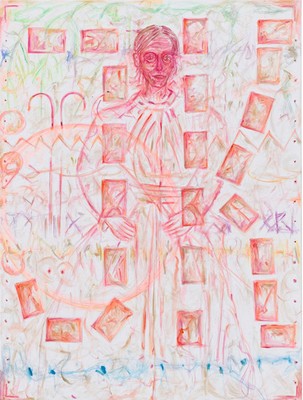Hans Hartung, La fabrique du geste
Musée d’Art Moderne de Paris
11 octobre 2019 – 1er mars 2020
Musée d’Art Moderne de Paris
11 Avenue du Président Wilson - 75116 Paris
www.mam.paris.fr
Musée d’Art Moderne de Paris
11 octobre 2019 – 1er mars 2020
A l’occasion de sa réouverture après une année de travaux de rénovation, le Musée d’Art Moderne de Paris présente Hans Hartung, La fabrique du geste.
La dernière rétrospective dans un musée français datant de 1969, il était important de redonner à HANS HARTUNG (1904-1989) toute la visibilité qu’il mérite. L’exposition porte un nouveau regard sur l’ensemble de l’oeuvre de cet artiste majeur du XXe siècle et sur son rôle essentiel dans l’histoire de l’art. Hans Hartung fut un précurseur de l’une des inventions artistiques les plus marquantes de son temps : l’abstraction.
Acteur d’un siècle de peinture, qu’il traverse avec une soif de liberté à la mesure des phénomènes qui viennent l’entraver – de la montée du fascisme dans son pays d’origine l’Allemagne à la précarité de l’après-guerre en France et à ses conséquences physiques et morales – jamais, il ne cessera de peindre.
Le parcours de la rétrospective comprend une sélection resserrée d’environ trois cent oeuvres, provenant de collections publiques et particulières françaises et internationales et pour une grande part de la Fondation Hartung-Bergman. Cet hommage fait suite à l’acquisition du musée en 2017 d’un ensemble de quatre oeuvres de l’artiste.
L’exposition donne à voir la grande diversité des supports, la richesse des innovations techniques et la panoplie d’outils utilisés durant six décennies de production. Hans Hartung, qui place l’expérimentation au coeur de son travail, incarne aussi une modernité sans compromis, à la dimension conceptuelle. Les essais sur la couleur et le format érigés en méthode rigoureuse d’atelier, le cadrage, la photographie, l’agrandissement, la répétition, et plus surprenant encore, la reproduction à l’identique de nombre de ses oeuvres, sont autant de recherches menées sur l’original et l’authentique, qui résonnent aujourd’hui dans toute leur contemporanéité. Hans Hartung a ouvert la voie à certains de ses congénères, à l’instar de Pierre Soulages qui a toujours admis cette filiation.
L’exposition est construite comme une succession de séquences chronologiques sous la forme de quatre sections principales. Composée non seulement de peintures, elle comprend également des photographies, témoignant de cette pratique qui a accompagné l’ensemble de sa recherche artistique. Des ensembles d’oeuvres graphiques, des éditions limitées illustrées, des expérimentations sur céramique, ainsi qu’une sélection de galets peints complètent la présentation et retracent son itinéraire singulier.
Afin de mettre en relief le parcours d’Hans Hartung, en même temps que son rapport à l’histoire de son temps, cette exposition propose des documents d’archives, livres, correspondances, carnets, esquisses, journal de jeunesse, catalogues, cartons d’invitations, affiches, photographies, films documentaires, etc.
Figure incontournable de l’abstraction au XXe siècle, Hans Hartung ne se laisse pas pour autant circonscrire dans ce rôle de précurseur historique, car sa vision d’un art tourné vers l’avenir, vers le progrès humain et technologique, vient nous questionner aujourd’hui encore. Le parcours met en tension et en dialogue ces deux aspects complémentaires qui constituent le fil rouge de cette exposition.
Un catalogue comprenant une quinzaine d’essais et une anthologie de textes est publié aux Éditions Paris Musées.
Commissaire de l'exposition : Odile Burluraux
Musée d’Art Moderne de Paris
11 Avenue du Président Wilson - 75116 Paris
www.mam.paris.fr

